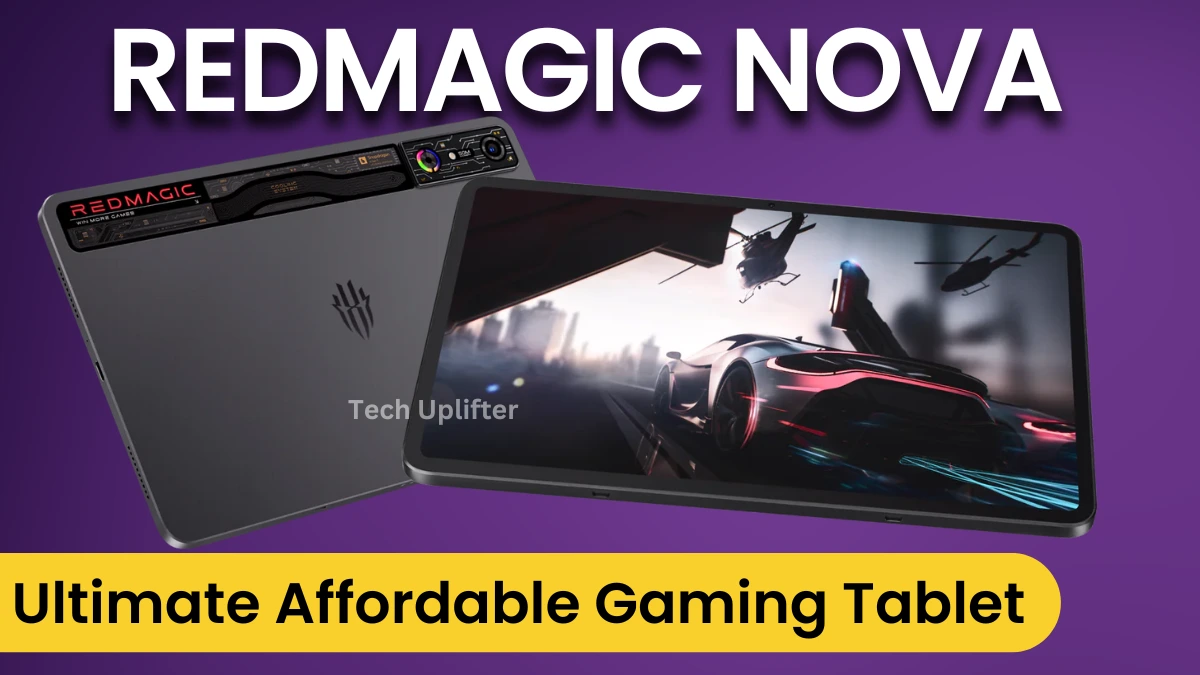Is the AMD Ryzen Z2 Extreme worth upgrading over the Z1 Extreme? Discover a full benchmark breakdown, detailed specs comparison, power efficiency tests, and real-world gaming performance analysis between the AMD Ryzen Z2 Extreme and AMD Ryzen Z1 Extreme in handhelds like the MSI Claw A8 and ROG Ally.
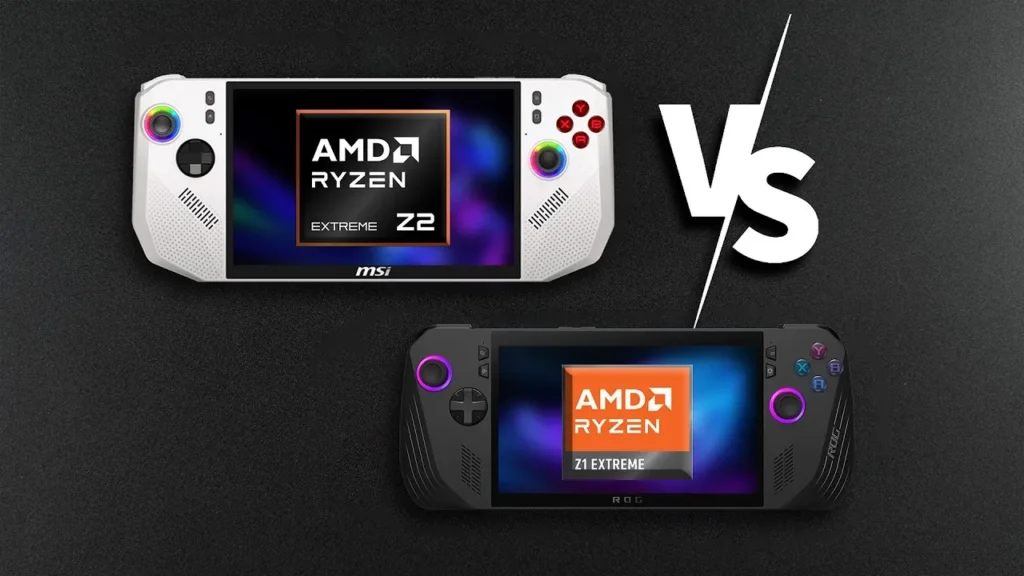
Learn which chip performs better in gaming benchmarks, Geekbench 6, 3DMark, and more.
Table of Contents
AMD Ryzen Z2 Extreme vs Z1 Extreme Key Features
| Feature | Ryzen Z1 Extreme | Ryzen Z2 Extreme |
|---|---|---|
| Architecture | Zen 4 | Zen 5 + Zen 5C Hybrid |
| Cores / Threads | 8 / 16 | 8 / 16 (3 Zen 5 + 5 Zen 5C) |
| Base / Boost Clock | 3.3 GHz / 5.1 GHz | 2.0 GHz / 5.0 GHz (Zen 5) |
| GPU Architecture | RDNA 3 (12 CUs) | RDNA 3.5 (16 CUs) |
| Max GPU Clock | 2900 MHz | 2900 MHz |
| RAM Support | LPDDR5 up to 7500 MT/s | LPDDR5X up to 8000 MT/s |
| Power Efficiency | Moderate | Improved (Lower TDP Scaling) |
| Driver Support | Mature | Developing |
A New Generation of Handheld APUs
Just when you thought AMD had set the bar with the Ryzen Z1 Extreme, they’ve returned to the ring with a new contender — the Ryzen Z2 Extreme. Designed specifically for handheld gaming devices like the MSI Claw A8, the Z2 Extreme promises a leap forward in performance and efficiency thanks to its new Zen 5 architecture. But does it really deliver? Or is it just a minor upgrade with a flashy name?
If you’re someone who jumped early on the ASUS ROG Ally train or a fan of AMD’s APU advancements, then this face-off between the Z1 Extreme and Z2 Extreme is probably something you’ve been waiting for. We’re breaking down specs, architectural differences, and most importantly, real-world gaming benchmarks to determine if the upgrade is worth your cash or if you should stick with the tried-and-tested Z1 Extreme.
What’s in This Comparison?
This comprehensive review will cover:
- Detailed technical comparisons of both chips
- Benchmarks at 17W and 25W TDP
- In-game performance (Cyberpunk 2077, Shadow of the Tomb Raider, Forza Horizon 5, and more)
- Pros and cons of each chip
- Final verdict: Is the Z2 Extreme worth upgrading to?
By the end of this article, you’ll have all the data you need to decide whether to hold onto your Z1 Extreme or make the jump to AMD’s latest handheld powerhouse.
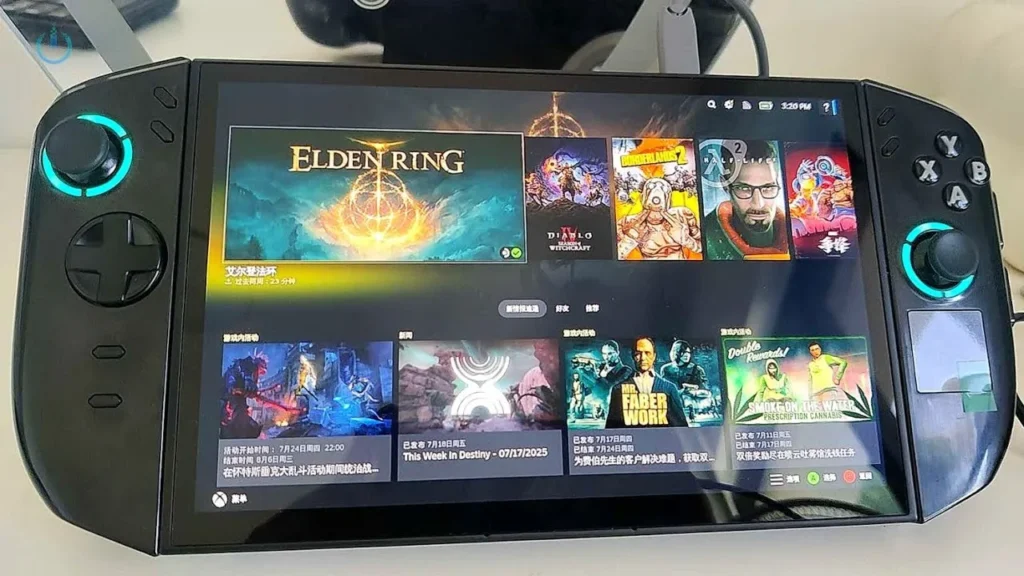
Overview of the Ryzen Z1 Extreme
Key Specifications
Let’s begin with the original champ in the handheld gaming ring — the AMD Ryzen Z1 Extreme. This chip made waves when it was introduced in the ASUS ROG Ally, featuring the robust Zen 4 architecture and an integrated RDNA 3 GPU. Here’s a quick breakdown of its specs:
- Architecture: Zen 4 (TSMC 4nm)
- Cores/Threads: 8 cores, 16 threads
- Base/Boost Clock: 3.3 GHz base, up to 5.1 GHz boost
- iGPU: 12 Compute Units RDNA 3, up to 2900 MHz
- RAM Support: LPDDR5 up to 7500 MT/s
- TDP Range: 15W – 30W
This setup offered an excellent balance of raw processing power and GPU performance, making the Z1 Extreme one of the most powerful handheld APUs available at launch. It was capable of running demanding AAA titles like Cyberpunk 2077, Shadow of the Tomb Raider, and Forza Horizon 5 with relatively high frame rates — especially impressive for a portable device.
Performance Track Record
The Z1 Extreme has proven itself as a reliable performer. With consistent boosts to driver optimization since launch, performance has improved steadily. For instance, in multiple real-world tests:
- Cyberpunk 2077 (1080p, 25W TDP): Averaged 42.6 FPS
- Shadow of the Tomb Raider (1080p, 25W TDP): Averaged 59 FPS
- Forza Horizon 5 (1080p, 25W TDP): Averaged 76 FPS
For most users, especially those gaming at 900p or 720p, this chip offers fluid frame rates without compromising visual fidelity. Additionally, the 12 CU iGPU is more than capable for today’s optimized titles.
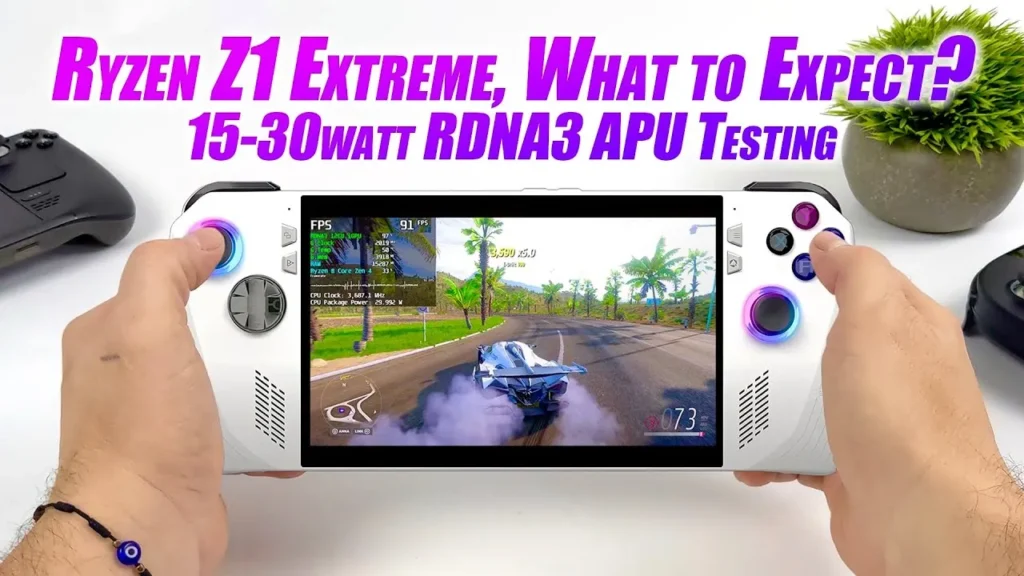
Overview of the Ryzen Z2 Extreme
Zen 5 Architecture: What’s New?
Enter the Ryzen Z2 Extreme — AMD’s latest shot at dominating the handheld gaming market. What makes it unique is its Zen 5 hybrid architecture, a combination of high-performance Zen 5 cores and more power-efficient Zen 5C cores.
Unlike traditional core setups, the Z2 mixes:
- 3 Zen 5 “Performance” Cores (up to 5.0 GHz)
- 5 Zen 5C “Efficiency” Cores (up to 3.3 GHz)
- Total Cores/Threads: 8 cores / 16 threads
- Base Clock: 2.0 GHz across all cores
This configuration mirrors ARM’s big.LITTLE strategy used in mobile processors and Apple Silicon, aimed at balancing power and efficiency. And while that sounds great in theory, the effectiveness in real-world gaming workloads needs scrutiny.
Z2 Extreme Specs Breakdown
Here’s how the Z2 Extreme differentiates itself:
- Architecture: Zen 5 (TSMC 4nm)
- Cores: 3x Zen 5 + 5x Zen 5C
- Clock Speed: 2.0 GHz base, up to 5.0 GHz (Zen 5), 3.3 GHz (Zen 5C)
- iGPU: 16 CU RDNA 3.5, up to 2900 MHz
- RAM: LPDDR5X, up to 8000 MT/s
- Total RAM on MSI Claw A8: 24GB (8GB iGPU-dedicated)
More compute units and faster RAM certainly sound like upgrades, especially for a handheld system. However, early driver support seems to be holding the Z2 back just a bit in multicore performance. That said, the real kicker lies in how the RDNA 3.5 GPU performs — which we’ll get into shortly.
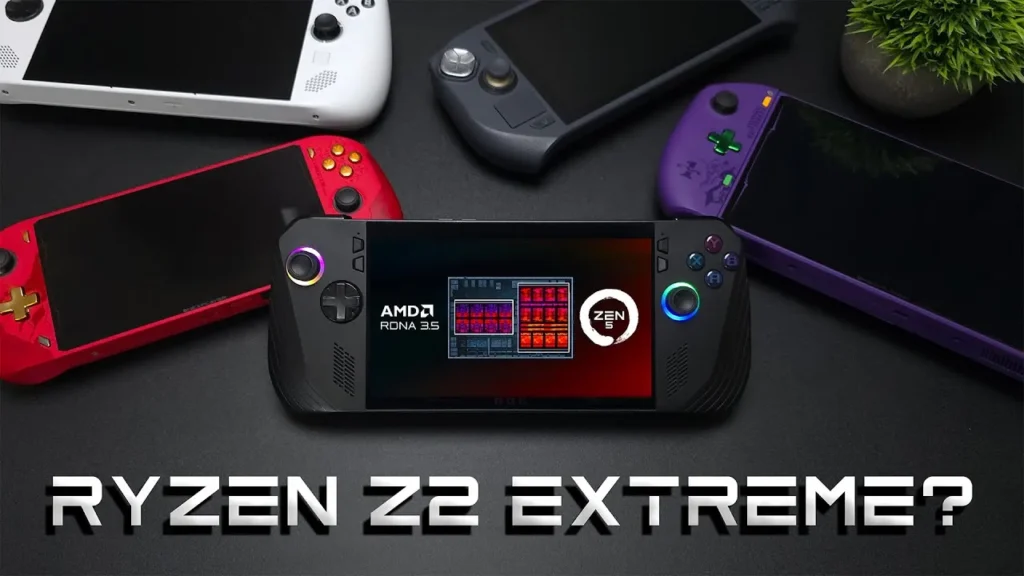
Architecture Comparison – Zen 4 vs Zen 5
Core Configurations & Clock Speeds
Zen 4 and Zen 5 are fundamentally different when it comes to architectural design. Zen 4 uses uniform performance cores across all eight cores, while Zen 5 splits duties between performance and efficiency cores. While this hybrid setup helps conserve power, it can also lead to inconsistent performance in heavily multithreaded applications, especially in scenarios where clock speed matters more than core count.
For example:
- Z1 Extreme: 3.3 GHz base, 5.1 GHz boost on all cores
- Z2 Extreme: 2.0 GHz base, 5.0 GHz boost on 3 cores, 3.3 GHz on 5 efficiency cores
In single-threaded workloads, the Zen 5 cores on the Z2 hold their own. However, in multithreaded tasks like video rendering or multitasking, the slower Zen 5C cores tend to drag the performance down slightly.
Power Efficiency and Design Improvements
That said, Zen 5 does show impressive improvements in power efficiency. With better IPC (Instructions Per Clock) than Zen 4, the Z2 can accomplish more work per cycle. At a 17W TDP, the Z2 manages to outperform the Z1 in most single-threaded benchmarks and iGPU tasks, which is a testament to its modern design.
In the long run, as drivers mature and software begins to take full advantage of the hybrid core design, we could see the Z2 Extreme pull ahead convincingly.
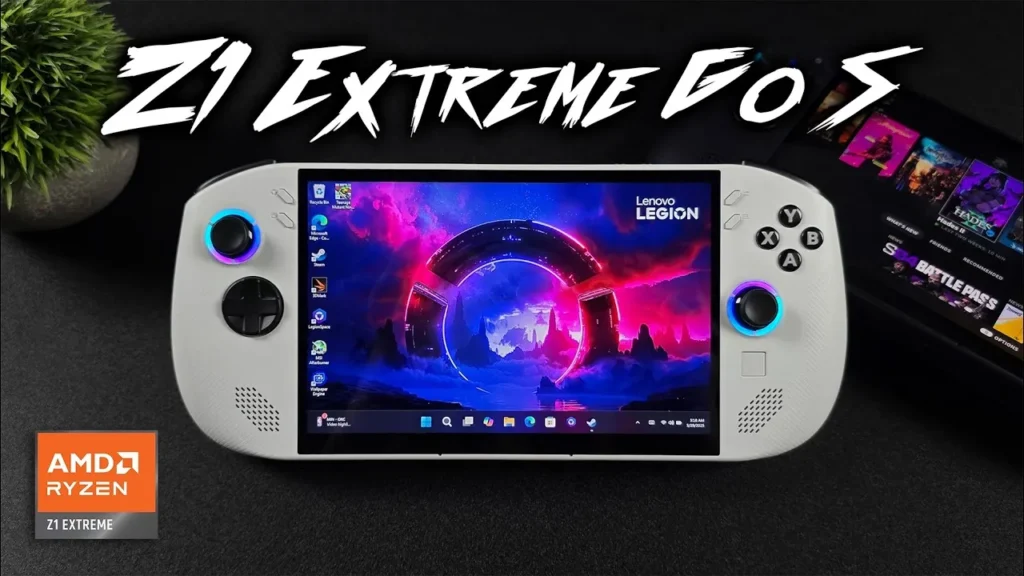
GPU Comparison – RDNA 3 vs RDNA 3.5
Compute Units & GPU Clock
Here’s where things really get interesting. The Z1 Extreme comes with 12 RDNA 3 compute units, while the Z2 Extreme boasts 16 RDNA 3.5 compute units. Despite both chips topping out at 2900 MHz on the GPU, the architectural advancements and additional compute units in the Z2 offer a noticeable bump in graphical performance.
To illustrate:
- Z1 Extreme (12 CU, RDNA 3): ~27,887 in Geekbench 6 OpenCL
- Z2 Extreme (16 CU, RDNA 3.5): ~33,488 in Geekbench 6 OpenCL
That’s a ~20% performance increase, purely from architectural and CU differences.
Real-World GPU Benchmarking
In practical scenarios, such as 3DMark Time Spy and gaming at various TDPs, the results are consistent:
- 3DMark Time Spy (25W): Z1 = 2539, Z2 = 2917
- 3DMark Steel Nomad: Z1 = 485 (4.86 FPS), Z2 = 560 (5.61 FPS)
These numbers clearly show that the RDNA 3.5 GPU offers more headroom and better performance under sustained loads, especially when paired with faster 8000 MT/s LPDDR5X RAM.
Performance Benchmarks – CPU and GPU Showdown
Synthetic Benchmark Results
Let’s dive into the numbers. Benchmarks don’t lie, and when it comes to real-world scenarios, you want to know exactly what each chip brings to the table — watt for watt.
Geekbench 6 – CPU Benchmarks at 17W and 25W:
| Test | Z1 Extreme | Z2 Extreme |
|---|---|---|
| Single-Core (17W) | ~2,300 | ~2,500 |
| Multi-Core (17W) | ~11,000 | ~10,300 |
| Single-Core (25W) | ~2,450 | ~2,650 |
| Multi-Core (25W) | ~11,800 | ~10,900 |
Here, the Z2 wins in single-core performance due to its newer Zen 5 cores, but lags slightly behind in multi-core because of the lower clocked 5C cores. It’s worth noting, though, that these gaps might close as AMD rolls out future firmware and driver updates.
Geekbench 6 – OpenCL GPU Benchmarks (25W):
| GPU | Score |
|---|---|
| Z1 Extreme (RDNA 3) | 27,887 |
| Z2 Extreme (RDNA 3.5) | 33,488 |
That’s a significant 20% leap in GPU performance with the Z2 — and it’s not just numbers on paper. This translates into smoother gameplay, higher average FPS, and better scaling at lower TDPs.
3DMark Benchmarks
3DMark Time Spy (17W):
- Z1 Extreme: 2,539
- Z2 Extreme: 2,917
3DMark Steel Nomad (25W):
- Z1 Extreme: 485 (4.86 FPS)
- Z2 Extreme: 560 (5.61 FPS)
These results reinforce the fact that RDNA 3.5 is more than a minor refresh — it’s a tangible step forward, especially for GPU-bound workloads.
Gaming Benchmarks – Head-to-Head Showdown
Cyberpunk 2077
This title is a heavy hitter and a true test for any GPU.
1080p – Steam Deck Preset – 25W TDP:
- Z1 Extreme: Avg. 42.66 FPS
- Z2 Extreme: Avg. 46.65 FPS
1080p – 17W TDP:
- Z1 Extreme: Avg. 32 FPS
- Z2 Extreme: Avg. 39 FPS
900p – 17W TDP:
- Z1 Extreme: Avg. 35 FPS
- Z2 Extreme: Avg. 45 FPS
This shows a 10-12 FPS boost when dropping from 1080p to 900p — a great trade-off for battery life and thermal headroom on handhelds.
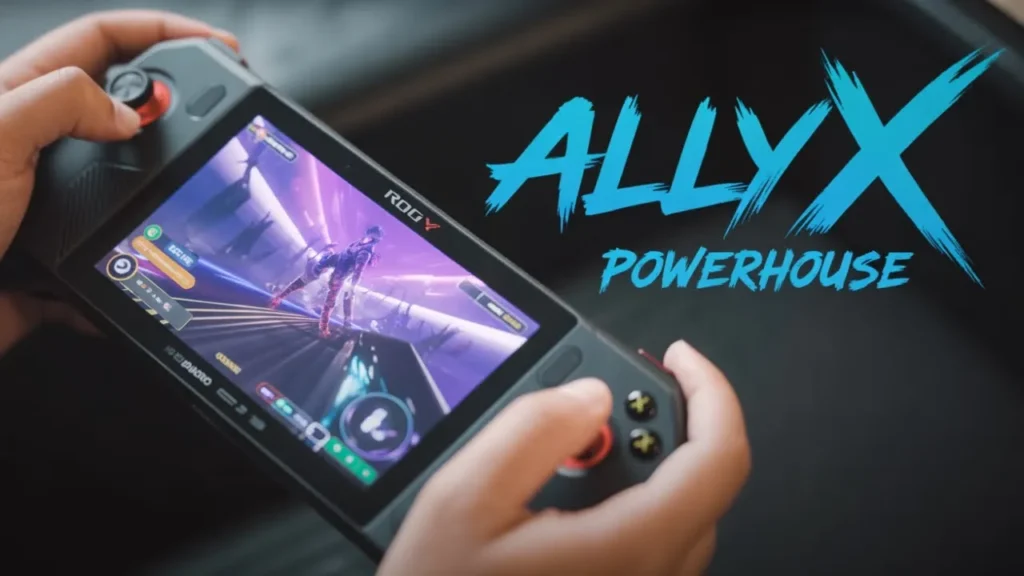
Shadow of the Tomb Raider
1080p – Low Settings – 25W TDP:
- Z1 Extreme: 59 FPS
- Z2 Extreme: 64 FPS
1080p – 17W TDP:
- Z1 Extreme: 44 FPS
- Z2 Extreme: 57 FPS
Again, we see a decent uplift, especially at lower wattages. Zen 5’s IPC improvements and the 16 CU GPU combo clearly make a difference.
Forza Horizon 5
One of the most optimized games on the list, and a good barometer for overall system balance.
1080p – Medium – 25W TDP:
- Z1 Extreme: 76 FPS
- Z2 Extreme: 80 FPS
1080p – Medium – 17W TDP:
- Z1 Extreme: 62 FPS
- Z2 Extreme: 75 FPS
The margin here grows at lower wattage, which is crucial for handheld gaming where power limits are tight.
Real-World Power and Thermal Management
Wattage Scaling and Efficiency
Performance at 25W is impressive for both chips, but at 17W — where handhelds usually live — the Z2 Extreme begins to shine.
Why? Because Zen 5 delivers more performance per watt. In scenarios where power delivery or thermal limits prevent full boost clocks, the Z2’s IPC advantage lets it stretch ahead despite having lower maximum core clocks on paper.
This means:
- Lower fan noise
- Longer battery life
- Less heat under your thumbs
And when paired with fast LPDDR5X memory running at 8000 MT/s, the system remains snappy and responsive even when gaming, multitasking, or emulating.
Cooling Considerations
The MSI Claw A8 houses the Z2 Extreme and comes equipped with an efficient thermal system. Even under extended 25W gaming sessions, the device manages to stay cooler than earlier ROG Ally Z1 systems. Less throttling means more consistent performance — no unexpected FPS drops mid-match.
Driver Optimization – The Missing Link
Z2 Performance Bottlenecked by Early Drivers?
As good as the Z2 Extreme performs, there’s an elephant in the room — drivers. Like any new hardware, early adopters face teething issues. When the Z1 Extreme launched, it took several updates before it began to hit its full stride.
Right now, the Z2 Extreme might be held back in multicore workloads by immature scheduling or lack of OS-level optimization for its hybrid architecture. This means:
- Windows may not be assigning tasks correctly between Zen 5 and 5C cores
- iGPU potential might not be fully unleashed
- Memory allocation isn’t perfectly balanced
The silver lining? This is all fixable. With proper updates and BIOS tweaks, performance should improve noticeably in the coming months — just as it did with the Z1 Extreme and Steam Deck.
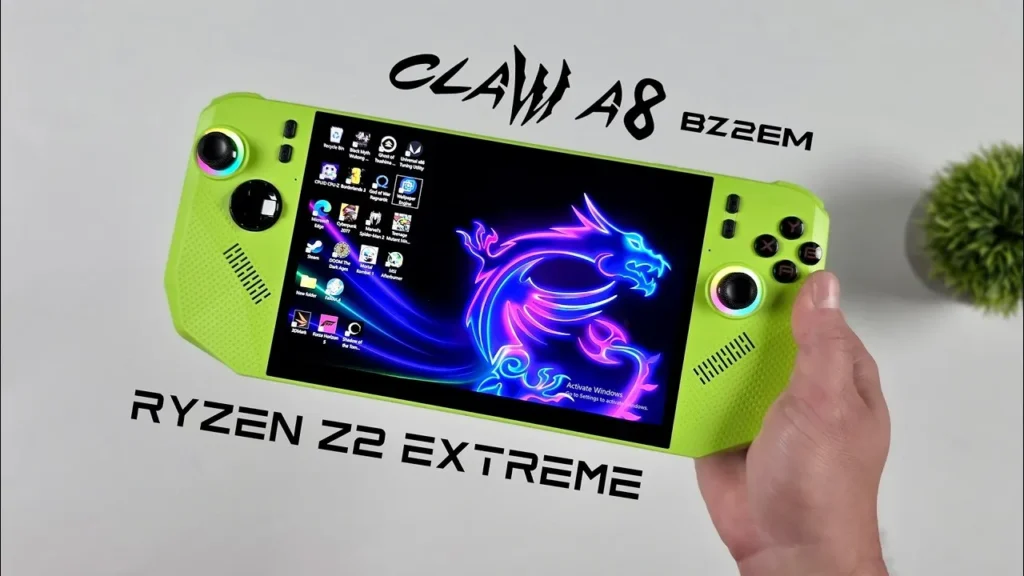
Gaming Experience – Smoothness, Resolution, and Playability
900p vs 1080p – Finding the Sweet Spot
Let’s get one thing clear — handheld gaming isn’t about pushing 4K visuals with ray tracing at ultra settings. It’s about smooth gameplay, responsiveness, and decent visuals. With that in mind, 900p is the true sweet spot for both the Z1 and Z2 Extreme chips.
In real-world gaming:
- Cyberpunk 2077 (900p, 17W)
- Z1 Extreme: 35 FPS
- Z2 Extreme: 45 FPS
- Shadow of the Tomb Raider (900p, 17W)
- Z1 Extreme: 49 FPS
- Z2 Extreme: 58 FPS
By dropping from 1080p to 900p, the Z2 Extreme closes the gap between “playable” and “smooth,” especially in action-heavy scenes. And for gamers on the go, this is a massive deal. Less load on the chip means cooler operation, longer battery life, and more consistent frame times.
Visual Quality and FSR/Upscaling Support
Both the Z1 and Z2 benefit from AMD’s FidelityFX Super Resolution (FSR) tech. In titles that support FSR 2.0 or 3.0, you can run games at 720p or 900p internally, and upscale to 1080p for surprisingly crisp visuals. Combined with RDNA 3/3.5 enhancements, the iGPUs on these APUs punch far above their weight.
Games like:
- Forza Horizon 5
- Tomb Raider Series
- Spider-Man Remastered
- Cyberpunk 2077 (with FSR 3)
…all become very playable with medium settings and FSR on.
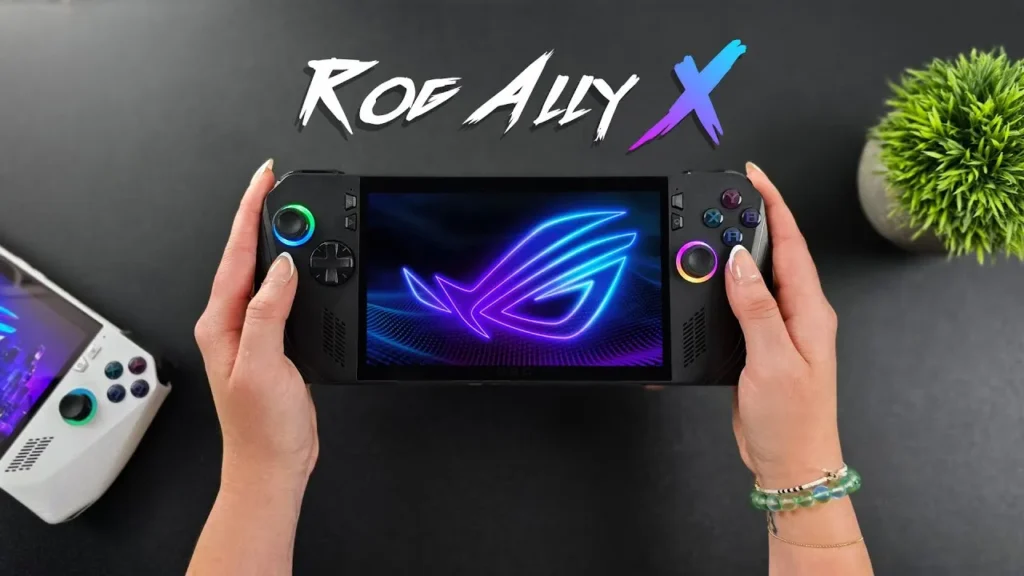
Pros and Cons – Z1 Extreme vs Z2 Extreme
Let’s break it down. If you’re looking at a handheld upgrade or shopping for your first AMD-based portable device, here’s what you need to consider:
Z1 Extreme – Pros & Cons
Pros:
- Mature drivers and ecosystem support
- Higher multicore clocks
- Consistent all-core performance
- Excellent compatibility across handhelds (ROG Ally, Ayaneo)
Cons:
- Older RDNA 3 GPU with fewer CUs
- Slightly lower single-core scores
- 7500 MT/s RAM cap limits bandwidth
| Aspect | Pros | Cons |
|---|---|---|
| Z1 Extreme | Mature drivers, High all-core clock speeds, Stable performance across titles | Fewer GPU compute units, Slightly lower single-core scores, Older architecture |
| Z2 Extreme | Zen 5 IPC improvements, Better GPU performance (RDNA 3.5), More power efficient at lower TDPs | Early driver limitations, Hybrid cores may cause scheduling issues, Limited device availability |
Z2 Extreme – Pros & Cons
Pros:
- Zen 5 architecture offers better efficiency
- Faster single-core performance
- RDNA 3.5 GPU with 16 CUs = better graphical throughput
- 8000 MT/s RAM improves bandwidth
- Better scaling at lower wattages
Cons:
- Early driver limitations affect multicore scores
- Hybrid core structure could confuse thread schedulers
- Still in limited devices (currently MSI Claw A8 only)
Should You Upgrade to Z2 Extreme?
Verdict: Depends on Your Situation
Let’s keep it real — the Z2 Extreme isn’t a game-changing leap over the Z1 Extreme just yet. If you already own a Z1-powered handheld like the ROG Ally, you’re not missing out on much today. Performance increases are real, but modest — 5-10 FPS in most games.
But the long-term picture tells a different story.
Once drivers mature, Windows optimizations are rolled out, and newer handhelds fully leverage LPDDR5X RAM and RDNA 3.5, the Z2 could leave the Z1 behind. It’s already showing better performance at lower wattages, which is key for handheld usage.
So…
- Already own a Z1 Extreme device? Hold off for now.
- Looking to buy your first handheld? Get a Z2-powered one — future-proofing matters.
- Love tweaking and BIOS tuning? Z2 will give you room to play and optimize further.
Final Verdict: AMD Ryzen Z2 Extreme vs Z1 Extreme
The AMD Ryzen Z2 Extreme is a solid evolution of the Z1 Extreme — not a revolution. Its Zen 5 cores and RDNA 3.5 GPU push performance forward, particularly in efficiency and graphics. However, current driver support and thread scheduling still hold it back from completely eclipsing its predecessor.
But if history is any guide (just look at the Steam Deck or ROG Ally’s software journey), the Z2 Extreme is likely to improve significantly over the coming months. For now, it offers a bit more performance, better power efficiency, and an upgraded GPU — all great things, just not quite earth-shattering yet.
If you’re the type of gamer who likes staying on the cutting edge and can stomach some early driver quirks, go for the Z2 Extreme. Otherwise, your Z1 Extreme device still has a lot of game left in it.
FAQs: AMD Ryzen Z2 Extreme vs Z1 Extreme
1. Will Z2 Extreme performance improve over time with updates?
Yes, driver and BIOS updates historically have improved APU performance significantly. Expect better core scheduling and GPU optimizations in future firmware releases.
2. Is the Z2 Extreme backward compatible with games optimized for Z1 Extreme?
Absolutely. Both APUs share similar architecture and are supported by the same driver packages, so no compatibility issues arise.
3. Can I manually overclock the Z2 Extreme for better performance?
Some BIOS options and tools may allow limited tweaking. However, most handheld devices lock this down for safety and battery efficiency.
4. Which handhelds use the Z2 Extreme currently?
As of now, the MSI Claw A8 is the only publicly released device with the Z2 Extreme, but more are expected later this year from companies like Ayaneo and GPD.
5. Does the Z2 Extreme run cooler than the Z1 Extreme?
Yes, especially at lower wattages. Zen 5 and RDNA 3.5 are both more efficient, leading to slightly cooler and quieter operation during gameplay.
Please don’t forget to leave a review.
AMD Ryzen Z2 Extreme, AMD Ryzen Z1 Extreme, Ryzen Z2 vs Z1 comparison, Z2 Extreme benchmarks, Z1 Extreme performance, handheld gaming CPU, MSI Claw A8 review, ROG Ally processor, Zen 5 architecture, Zen 4 vs Zen 5, RDNA 3 vs RDNA 3.5, iGPU gaming benchmarks, best handheld gaming APU, Ryzen APU comparison, Ryzen Z2 gaming test, Ryzen Z1 Geekbench, Ryzen Z2 Geekbench, Ryzen Z2 vs Z1 FPS, Ryzen for handheld consoles, Z2 Extreme features
Thank You for visiting Tech Uplifter!
Don’t forget to Subscribe to our Official Newsletter for latest updates.

